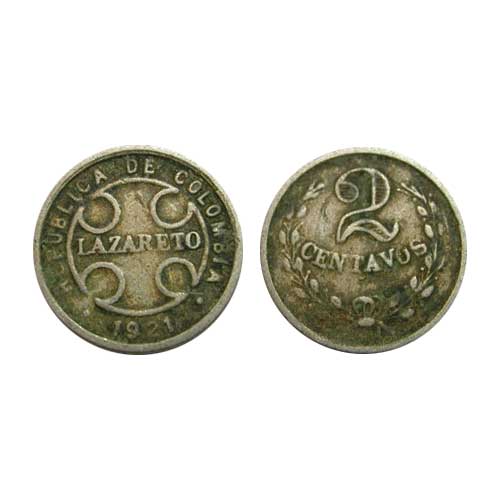Money of Leprosy colony
2018-07-09 Mon
During the start of 20th-century leprosy was regarded as a curse that doomed a person’s life. This happened due to the lack of knowledge and medical development during that period. Nearly 15 to 30 million people were afflicted with leprosy. History provides evidence that people with this disease were shunned by the society, forced to leave the families and live apart forming their own colonies.It was a common practice in many countries during the first half of the previous century, to forcibly confine people with leprosy to a special institution. Due to the popular belief that Leprosy was contagious, some countries issued special coins, tokens and paper money which were a legal tender for these colonies, also known as ‘leper colonies’, to prevent contamination.
Between 1900 to 1930 CE, Colombia made a special coin for leprosy. It was an attempt to stop the spread of leprosy in the unaffected population. The leper money was issued in 1901 by the Colombian president Jose Manuel Marroquin. The denominations were 1, 2, 2 1/2, 5, 10, 20 and 50 centavos or cent. The above-shown coin is the copper-nickel 2 Centavos or cent of Colombia issued in 1921.
The 50 Cent of Colombia was the last issue of this special money; it was issued by President Miguel Abadia Mendez.
The countries like Philippines, Japan and Panama all issued this type of money in an attempt to prevent leprosy form spreading.
What they did in their false belief of preventing this disease was to treat these people like cattle. These coins are the reminder that people with leprosy were denied their freedom and common human dignity.
Latest News
-
Mahatma
2024-04-25 ThuIndia Post issued a commemorative postage stamp on #LalaHansraj, also known as Mahatma Hansraj for�...
-
Berar Mint of Muhammad Akbar
2024-04-25 ThuBerar was a kingdom located in the Deccan region, with Elichpur as its capital. It was one of the Su...
-
Janma Kalnayak of Bhagwan Mahavir
2024-04-24 WedOn 21st April 2024 which was the 2550th Janma Kalnyanak of Bhagwan Mahavir Swami, PM Modi unveile...
-
Gold Pagoda of Vijaynagar Empire King Deva Raya I
2024-04-10 WedKing Deva Raya I of the Vijayanagara Empire was a patron of Kannada literature and architecture. He ...
-
Silver Denarius of Septimus Severus
2024-04-05 FriLucius Septimius Severus served as the Roman emperor from 193 to 211 AD. Severus sat on the throne o...

